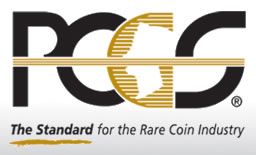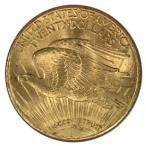Coinworld
The rare coin market is often compared to the art market, and the comparison is useful in some limited regards. Both markets are somewhat thinly capitalized when compared to other asset classes, both deal with often unique objects that generally have clear comparables in terms of quality, desirability and rarity, and there are relatively high transaction costs when buying or selling.
More often than not, most expensive U.S. coins go to U.S. buyers, while the art market is more global in its scope.
Take the 1917–18 Reclining Nude painting by Italian artist Amedeo Modigliani that sold at Christie’s on Nov. 9 for $170.4 million. The picture went to a Chinese buyer who plans to display it in his private museum in Shanghai. The work had been off the market for 60 years and seven bidders remained at the $100 million level, showing the massive appetite for masterpieces that are not easily found.
The nearly $500 million auction, titled “The Artist’s Muse,” combined the Impressionist and Modern and Contemporary categories and offered 34 carefully selected works. Of the 34 works, 24 sold, showing that the art market is strong at the top, but that buyers remain selective.
The same can be said for the rare coin market.
Attending the previews of the huge sales held in early November in New York by Christie’s and its primary competitor Sotheby’s reminded me of the huge volume of works of art of varying quality that trade hands. Not everything is a masterpiece.
The major sales by the two firms in the spring and autumn in New York now routinely collectively realize more than $2 billion each season.
Some pieces offered — like the Modigliani — jumped off the wall and had a presence. These pieces are considered trophies.
Others were hampered by too optimistic expectations from their owners and the auction houses, did not meet their reserves, and went unsold. Or, they were expensive, but easily replaceable, had been lingering on the market and lacked freshness, or were not characteristic of the artist or from the artist’s prime period.
But perhaps the strongest link to the rare coin market, and one that’s seen in nearly all collectible markets, was that quality ruled. The top works were exceptional in condition, rarity and provenance and the market rewarded these, as long as they were accompanied by a reasonable estimate, with record prices.
The same can be seen in the rare coin market today, where high quality rarities, such as those in the D. Brent Pogue Collection, perform strongly while other coins seem to return to the auction block multiple times before finally finding a buyer at a bargain price.
http://www.coinworld.com/news/us-coins/2015/11/buyers-want-the-best-in-rare-coins-and-fine-art.html#
![[Most Recent Quotes from www.kitco.com]](https://i0.wp.com/www.kitconet.com/images/live/s_gold.gif)
![[Most Recent Quotes from www.kitco.com]](https://i0.wp.com/www.kitconet.com/images/live/s_silv.gif)







